2024 Ford Mustang EcoBoost Review: More Mustang for more people
They’re calling this new Mustang the seventh generation. Hmmm! They sure don’t define that word “generation” like they used to. The first-gen Mustang went from 1964 to 1974 and was replaced by the radically smaller, Pinto-based Mustang II. The Mustang II was replaced in 1979 by the fabulous Fox, and the Fox by the curvy, ovular SN95 in 1994. Now those were generational changes.
By comparison, the 2024 Mustang (internal code name: S650) is about a 3.5-magnitude quake on the Richter scale, definitely a lot less than a complete rupture. Meaning it retains a lot of the previous-gen S550 of 2015–23, the body hard points and suspension pretty much the same. America’s favorite (and last remaining) pony car hasn’t gone all-wheel-drive, or adopted hybrid-electric gizmology, or suddenly incorporated tons of composite materials. Even with its dazzling new in-car electronics, it remains as it was before: a handsome if slightly porky nostalgia piece for folks who like to revel in the good old days.

But there is enough new that we can cut Ford a little slack here. Because of the company’s peculiar information embargos, we’ll be covering the V-8-equipped GT in a separate story. For now, we’re sticking just to the base EcoBoost turbo-four versions—starting prices of $32,515 for the hardtop coupe and $40,615 for the convertible—which some lucky journos got to flog for a hot summer second over Southern California mountains last week.
We were part of the pack and can say that though the EcoBoost is half the cylinder count of the V-8, it’s still got plenty of punch, dash, and flair to give gas jockeys a tingle, even without an available manual transmission. And for 2024, Ford proves that it knows its Mustang customers well by equipping certain versions with a new electronic handbrake optimized for drifting. For really dedicated show-offs, there’s a button on the fob that lets you rev the engine while standing outside the car. Cars and coffee will never be the same.
Unfortunately, Ford nixes the manual from the EcoBoost order sheet for 2024, no doubt because the bulk of buyers are rental fleets and people with less obsession for all-out performance. And it costs big money to certify each separate engine-transmission combo. Heck, Ferrari did away with manuals decades ago and the gates of Maranello haven’t burned, so be glad you can still get a stick in the Mustang GT. For now.
Specs: 2024 Ford Mustang EcoBoost
Price: Coupe $32,515 / Convertible: $40,615
Powertrain: 2.3-liter turbocharged four-cylinder, 10-speed automatic
Horsepower: 315
Torque: 350 lb-ft
Layout: Rear-drive, two-door, four-passenger coupe or convertible
EPA-rated fuel economy: 21–22 city/29–33 highway
0–60 mph: 5.0-sec (est)
Competitors: Toyota GR86, Subaru BRZ, (the last) Chevrolet Camaro
Except for the fact that your only transmission choice is the 10-speed automatic, the new Mustang EcoBoost tries to be more things to more people, with loads of options and tons of personalization afforded by a highly digitized interior. There are 12 available wheels, 11 exterior colors with several options for hood and side stripes, four colors of Brembo brakes if you opt for the $3475 High Performance package, and a host of add-ons from car covers (two available colors) to a first-aid kit. Don’t sit down with the online configurator unless you have a free evening, because ordering a ’24 Mustang is not something you do during a commercial break.
Ford says it wants to broaden the car’s appeal to pull in new customers, especially younger buyers accustomed to staring at screens all day. So it has built the new Mustang with a lot of screen to stare at, infused with loads of submenus and wooly multicolor graphics to entertain and delight. The old “twin-brow” dash evocative of the 1960s original is gone, replaced by a 12.4-inch flat-screen instrument cluster adjoined seamlessly in one flowing rectangular wave of glass to the 13.2-inch touchscreen that is your portal to Ford’s Sync 4 infotainment system.

All of it is angled at the driver in what Ford claims is a riff on the all-glass cockpit of an F-35 fighter jet, with the operating system intended to mimic the latest video games. “It’s progressive, disruptive, pushing the Mustang into the future,” said Chris Walter, the Mustang’s exterior design director. “We want it to feel like a digital video game or the devices that [younger people] have grown up with.”
Disruptive for sure, especially in what is the market’s most pointedly retro vehicle (now that the Camaro and Challenger are dead). Do Mustang buyers really want to swipe their fingers on a screen to adjust cabin temps or select radio stations, choose their ambient lighting from a zillion possible colors—purple and yellow gauges anyone?—or spin a 3D rendering of their car to amuse their passengers?
Ford is gambling that they will. Or, at least, they won’t mind, especially since some functions can be done with steering-wheel buttons. And the screens usher the Mustang into the modern age, giving the driver access to features they never had before. Like picking from five different gauge displays, one of which is a digital simulation of the classic Fox-body instruments (yes, please!). You can select four different drive modes, ranging from “Slippery” to “Track,” which vary the throttle and stability control settings, and also pull up a screen with extra engine-performance gauges, an acceleration timer, or a track-lap timer.
It goes on and on. One of the few hard buttons on the dash has a small Mustang pony on it. The so-called “My Mustang” button takes you directly to the menu page for most of the drive features. Suffice to say, when they deliver your new Mustang, don’t let the salesperson out of the car until he or she has shown you everything. And fear not; the EcoBoost has the exact same menus and graphics as the GT.

Car writers used to usher in a new Mustang with talk about carburetor barrels and solid lifters; now we talk about 3D graphics engines and the user experience. As Captain Jack Aubrey observes in Master and Commander, “That’s the future; what a fascinating modern age we live in.” At least the screens are easy to read and, on our short drive, weren’t flustered by direct sunlight. Eventually you don’t even think about them, they just become part of this pony’s scenery.
No carburetor stats here, but there are things to talk about under the hood. The 2.3-liter inline-four has some significant changes, including a revised valvetrain that replaces flat-tappet lifters with roller finger-follower lifters to reduce friction for more efficiency. The direct fuel-injection system is now joined by separate port injectors, the two injector systems working together in certain lower-rpm situations to take fuller advantage of turbulence in the manifold for better burning and lower emissions. The turbo actually shrinks to reduce compressor inertia and hasten spool-up and thus throttle response, and an electronic wastegate replaces the old pressure valve to give precise control over boost dumps. Ford has also computerized the exhaust-gas recirculation system and rerouted the intake to bring the airbox closer to the manifold.

The net effect on paper is an eensy power bump, only from 310 horses to 315. Torque remains the same at 350 pound-feet, but there’s said to be an improvement in emissions, and there’s definitely a slight improvement in fuel economy. However, the net effect in the real world seems to be a livelier throttle response that makes the EcoBoost plenty assertive off a corner or up a freeway onramp. Is the feel you get in your butt the five horsepower, the revised throttle mapping, or better tuning of the 10-speed, which clicks in upshifts with the speed of a dual-clutch? Probably all of the above.
About that $3475 High Performance Package: Besides larger Brembo brakes; 19-inch wheels and 255/40 Pirelli PZero summer tires; a 3.55 Torsen limited-slip rear differential to replace the standard 3.15; a strut-tower brace; steering wheel paddle shifters; stiffer springs and sway bars; and a long list of other stuff, the package gives you the future option of selecting MagneRide electronic suspension. We say “future option” because, as of this writing, the press kit says it’s an option with the Performance Package, but as yet it’s not available to select on the online configurator. Also included is an electronic hand-operated parking brake, which is the enabler for the car’s Drift Brake.
As if YouTube wasn’t already crammed with Mustangs going sideways to disastrous effect, the factory has decided to give the nation’s budding drift-o kings a helping hand. There’s no release button on this hand brake, meaning you can yank and release at will to fishtail the car in whatever way best demonstrates that mother was wrong. In a parking lot demo, it proved fairly easy to pitch the big Stang around cones using just the right combo of brake and throttle, but it does strike us as equipping the car with a dedicated idiot mode. Then again, this is the company that brought you the Line Lock burnout feature for immolating rear tires.
When not drifting or driverless revving or doing other Mustang-y type silliness, the EcoBoost is a pleasant cruiser, potentially returning over 30 mpg on the highway. It’ll stretch out and relax, with decent sound insulation and a quiet mode among its four driver-selectable exhaust volumes, made possible by electronic muffler flaps (and, we suspect, varying levels of sound boosting through the car’s audio system).
The engineers tell us the steering rack has been revised and made 3 percent quicker. Which further helps the big car feel frisky in the hills, with direct steering and excellent composure over writhing pavement. Full disclosure: We only drove a Performance Pack version, with its stickiest possible rubber and firmest available springs. Even so, the ride was quite acceptable, and we dare say the Performance Package is well worth it if you’re not a cost accountant at Hertz or Avis.
Yes, we keep harping on how big and heavy the Mustang is. The lightest EcoBoost hardtop is just shy of 3600 pounds, according to the specs. The heaviest, a convertible GT, is over 4000. True, all of the latter-day muscle machines are in this weight neighborhood, but for roughly comparable prices, a Toyota GR86 is less than 2900 pounds. You know, just sayin’.
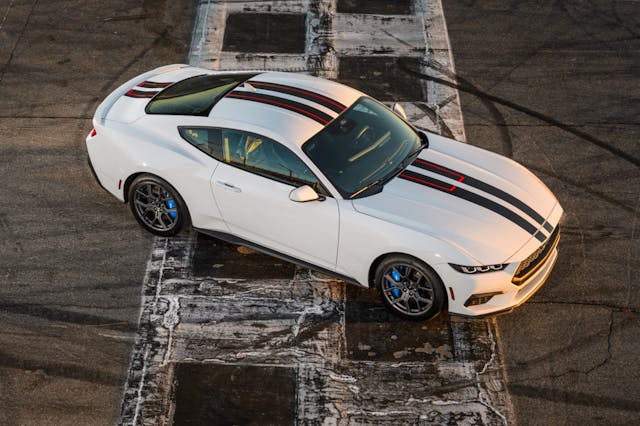
People will continue to call the EcoBoost the “base” Mustang and will look down on it, but since day one at the 1964 New York World’s Fair, the Mustang has always depended for its survival on the volume of its less flashy versions. The only difference today is that the “base” Mustang is so much better than any base car really has a right to be, it makes you wonder why the world even needs a GT. Well, we’ll tell you in the next story.
2024 Ford Mustang EcoBoost
Highs: Chassis keeps getting better; base engine has upgrades; up-to-date interior electronics; lots of freedom to customize.
Lows: Still a bit too heavy; all-iPads dash may not please traditionalists; no manual in the EcoBoost.
Takeaway: All the old Mustang attitude but improved, and at a semi-affordable price.
***
Check out the Hagerty Media homepage so you don’t miss a single story, or better yet, bookmark it. To get our best stories delivered right to your inbox, subscribe to our newsletters.
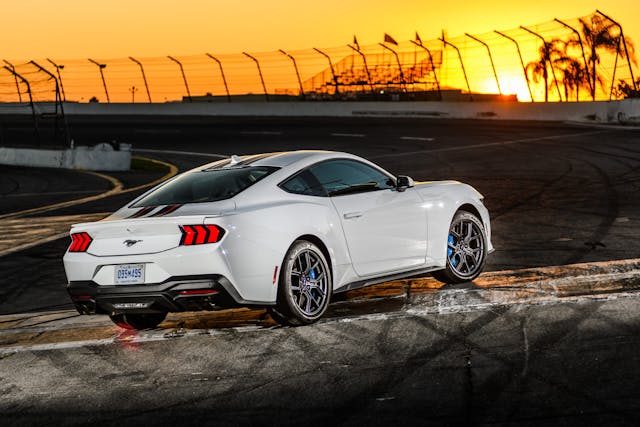

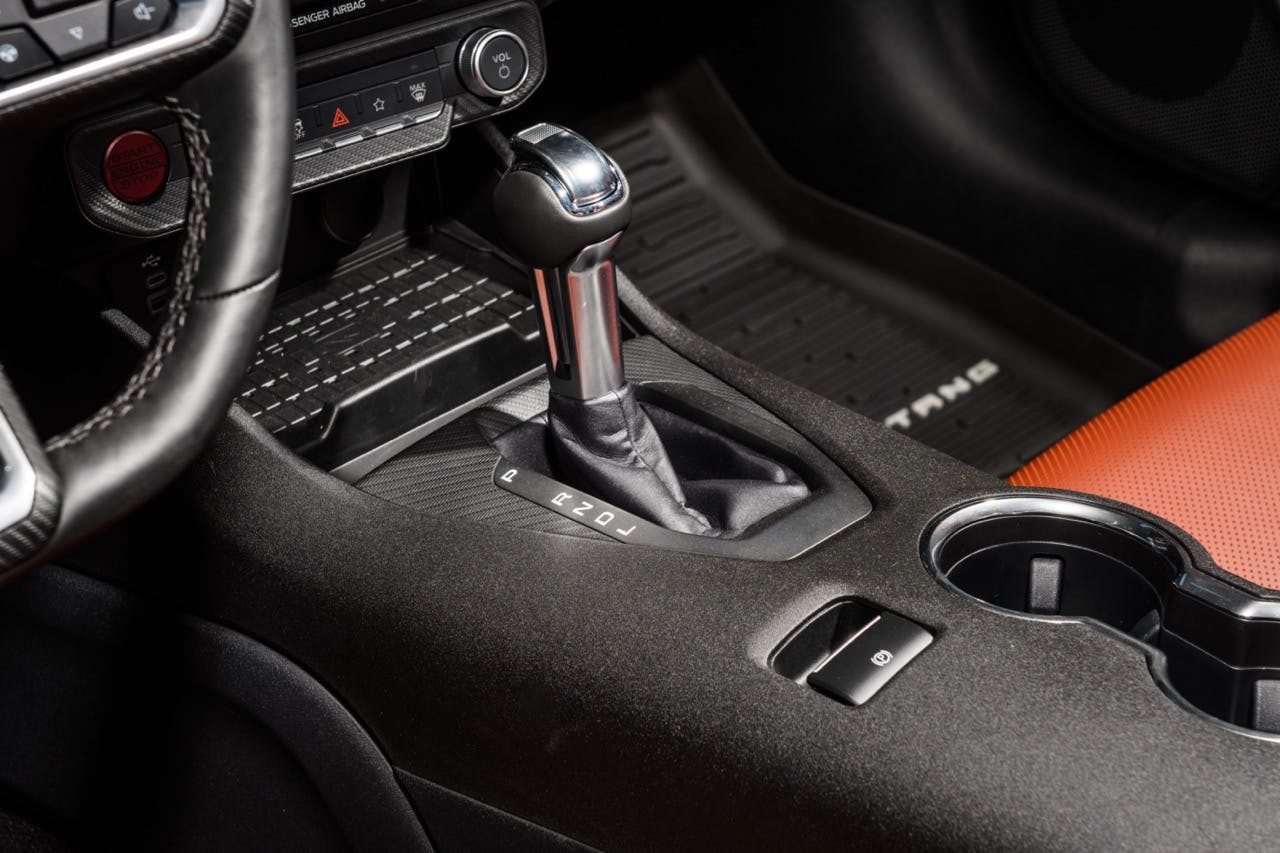
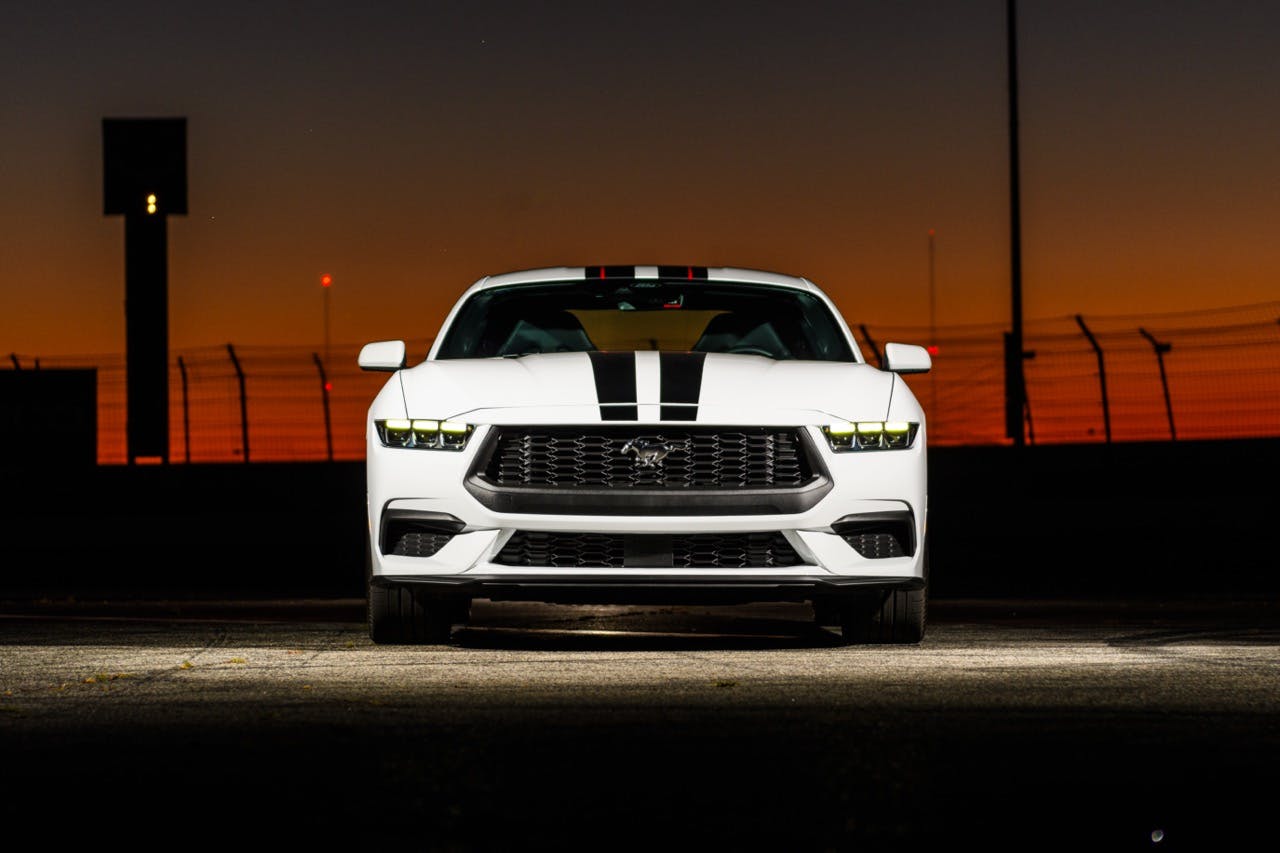
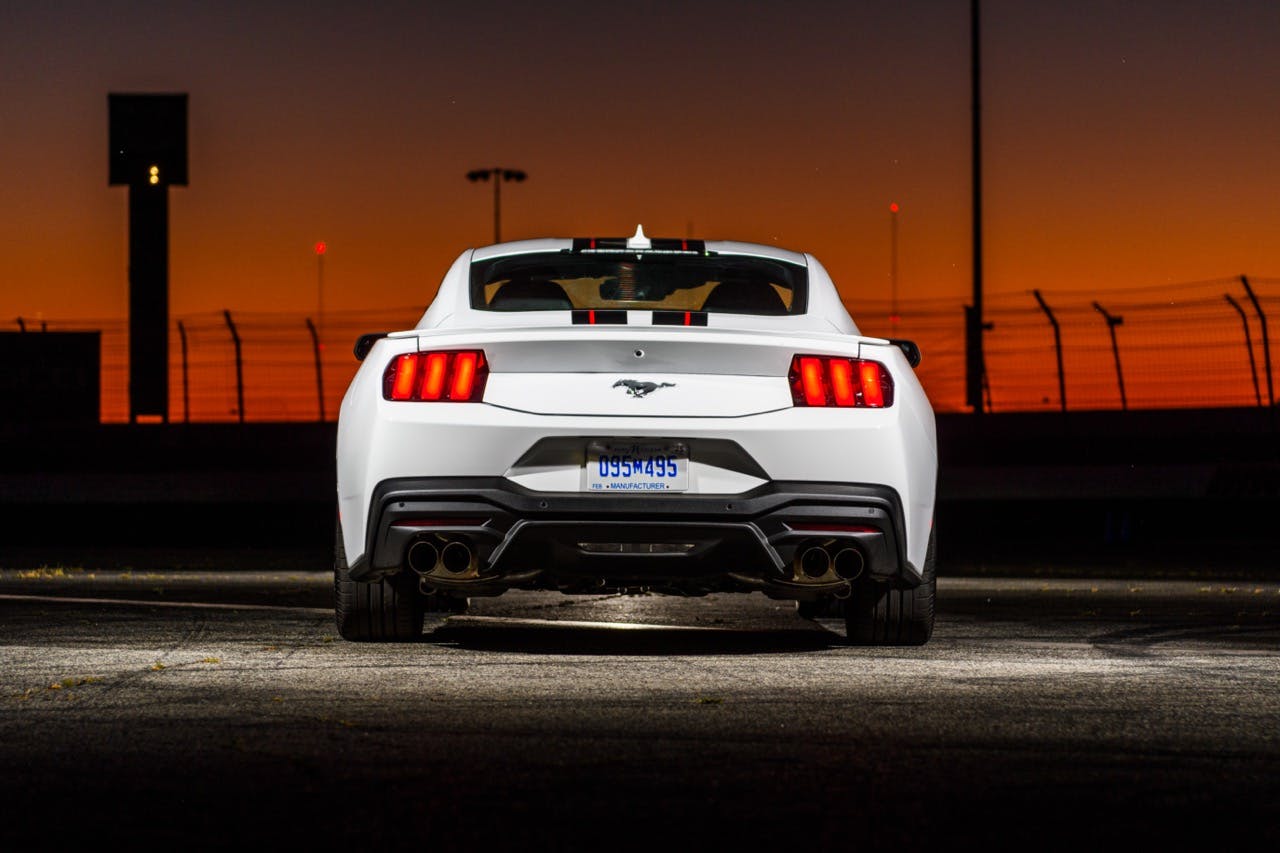
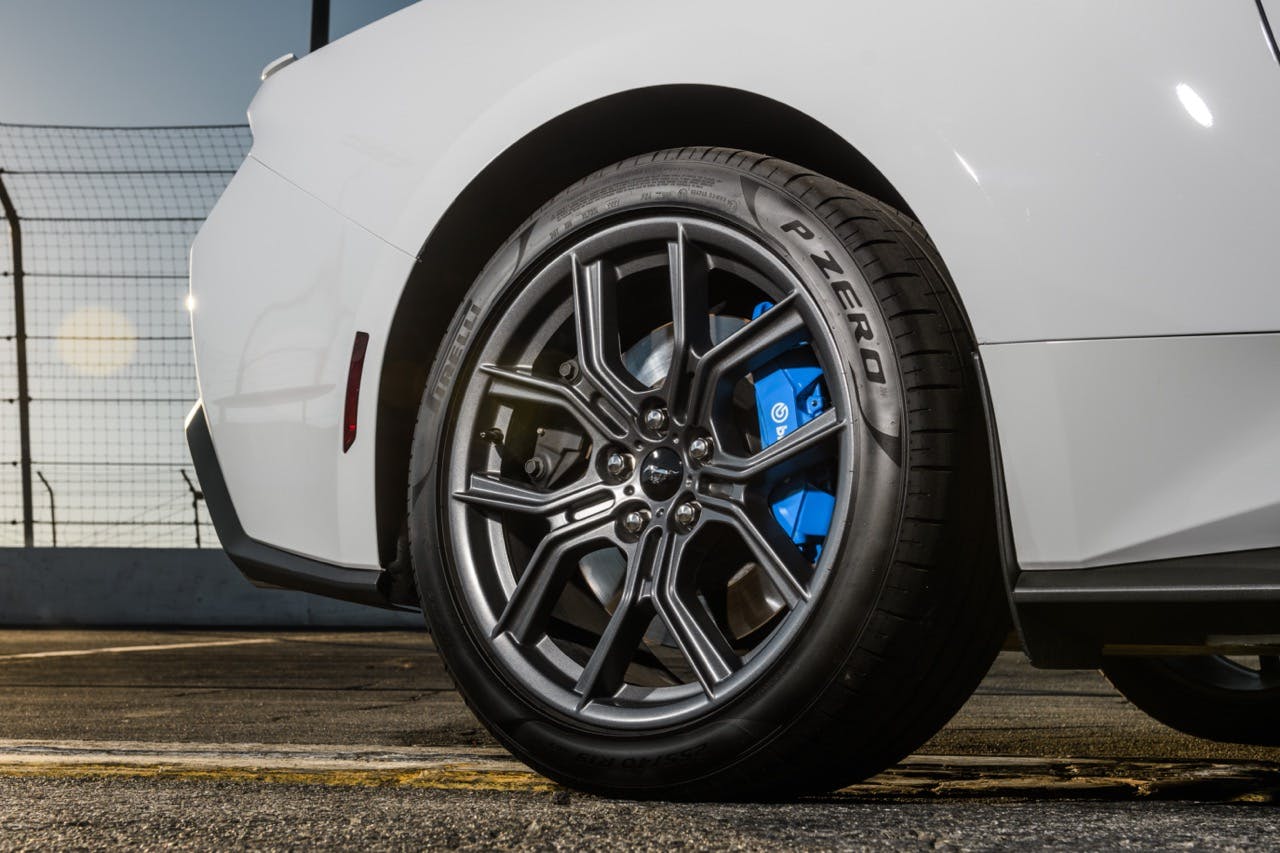
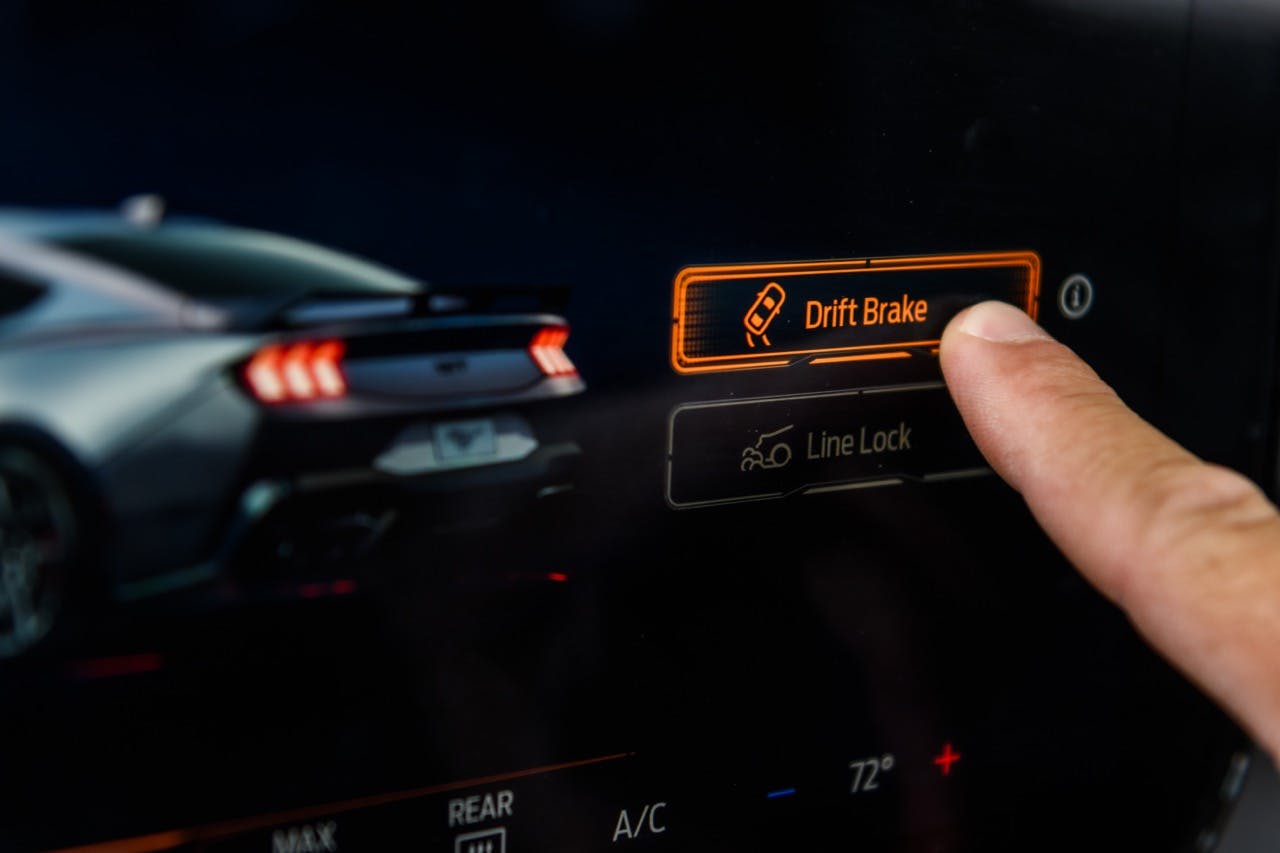
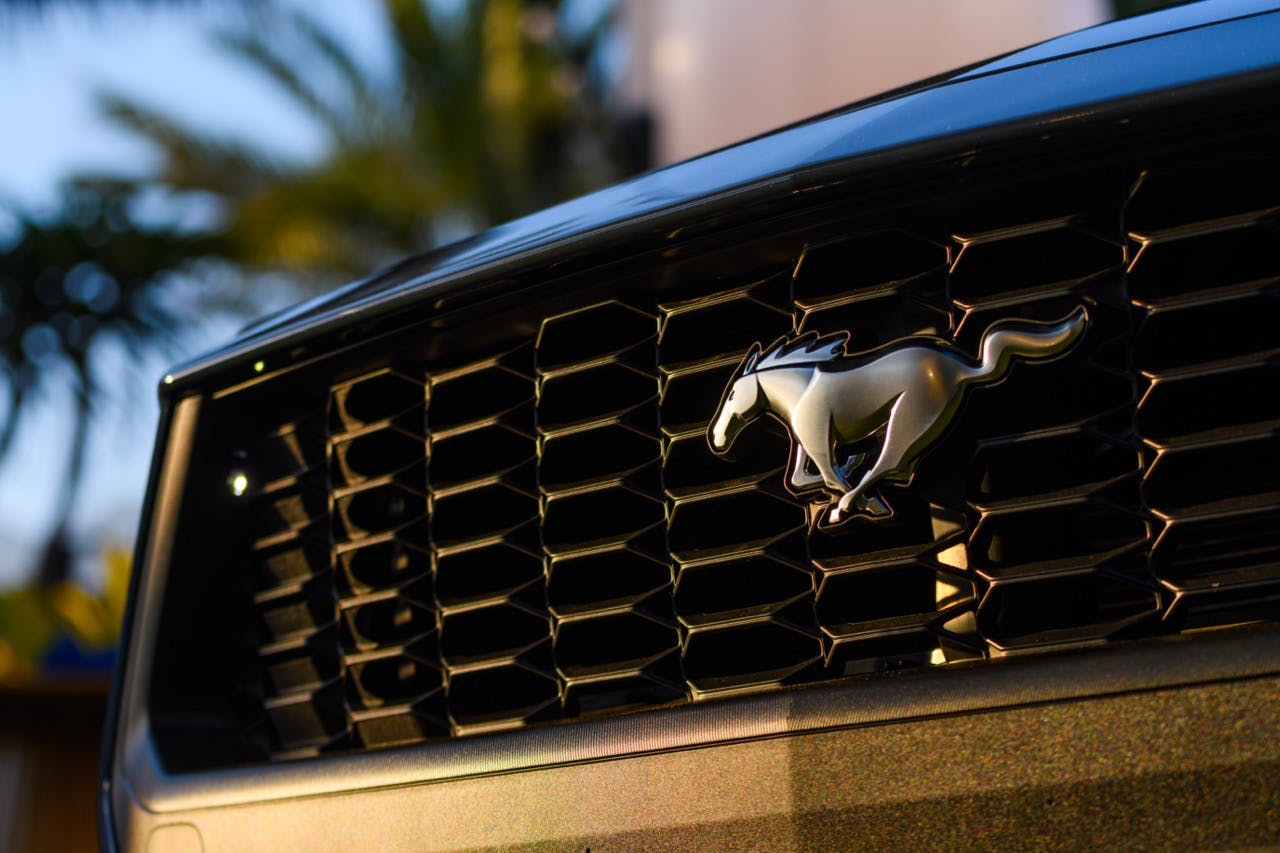
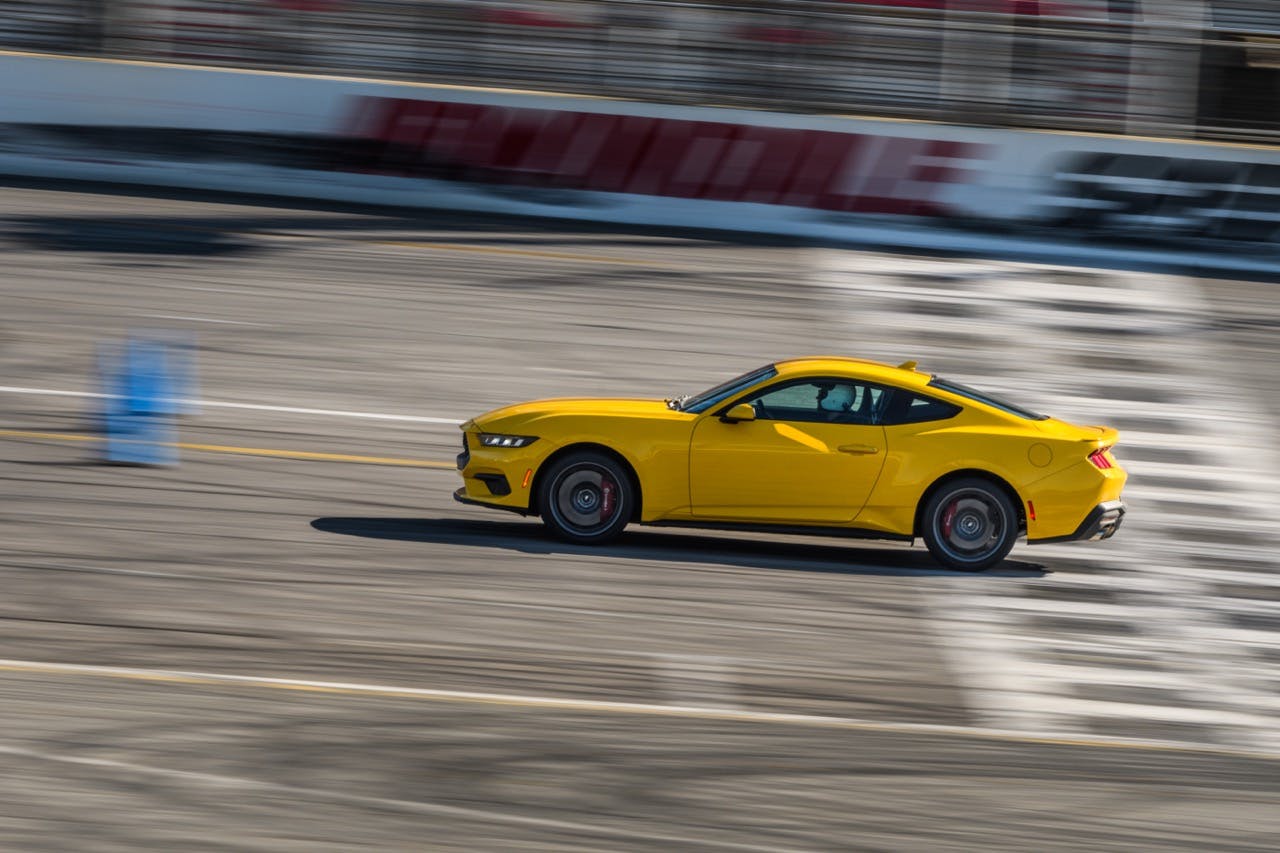

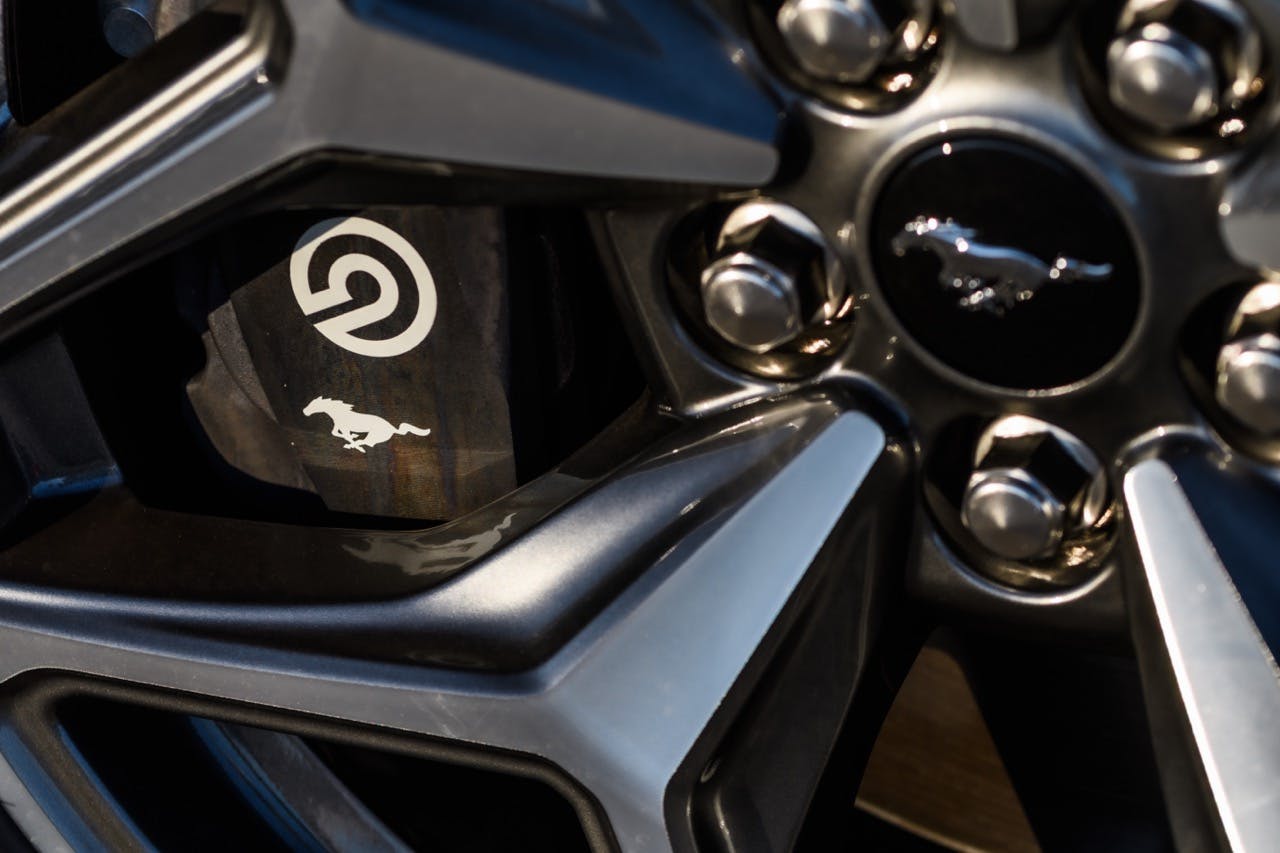
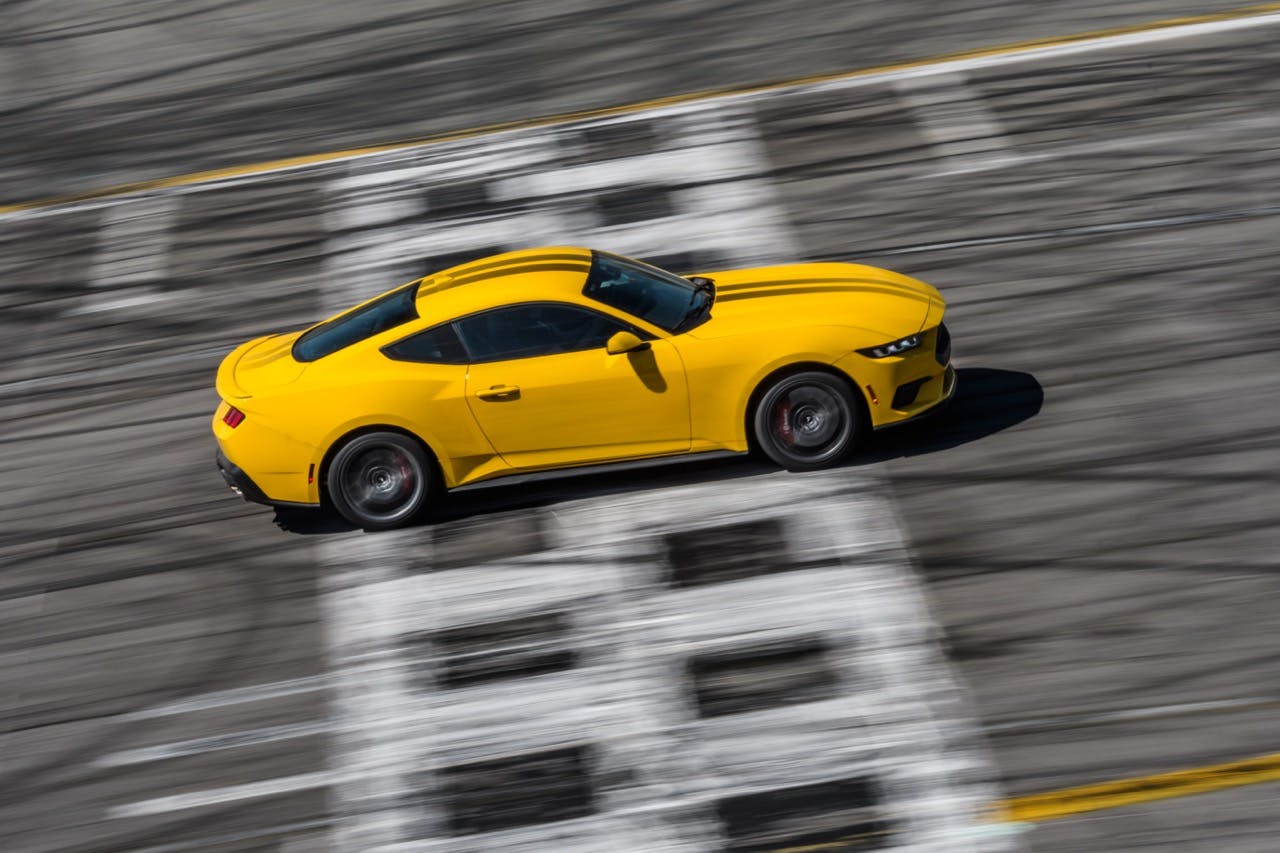
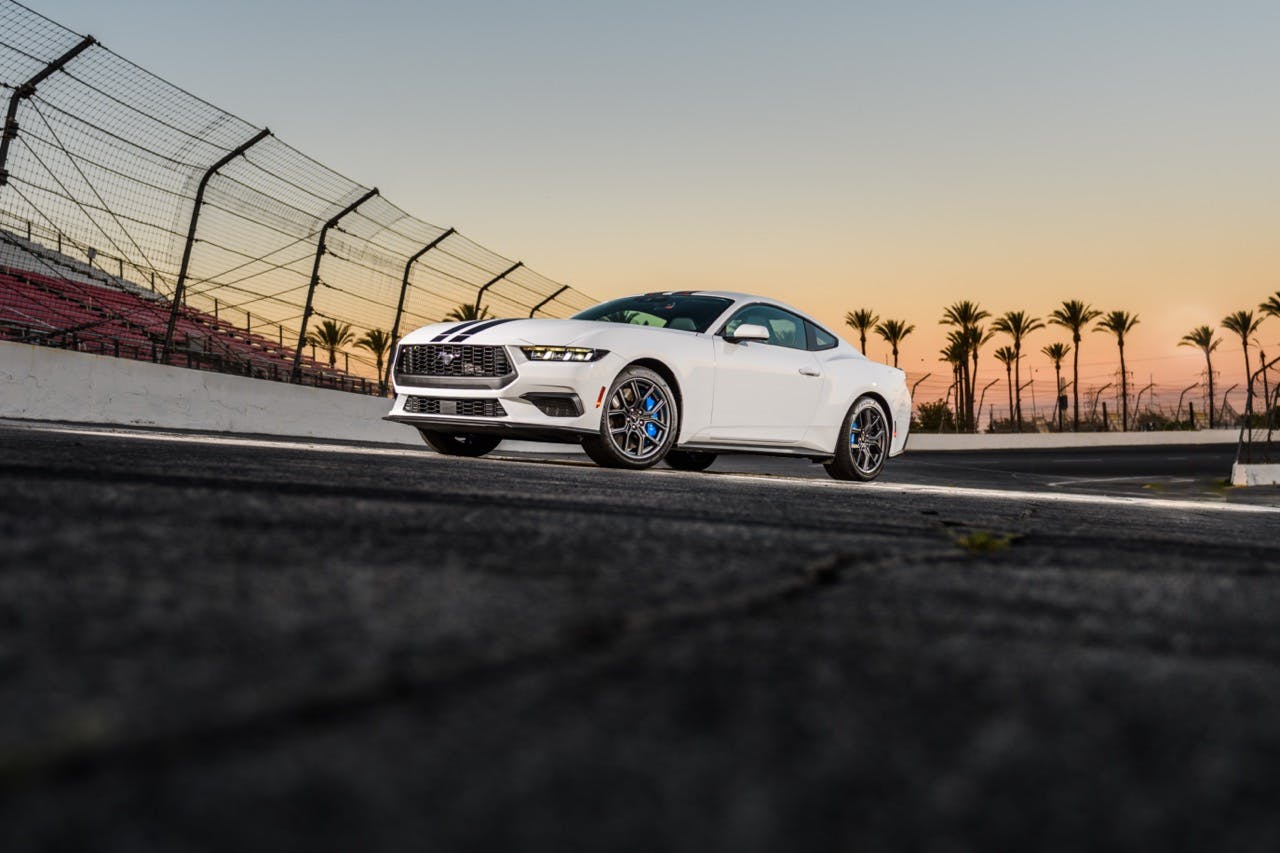

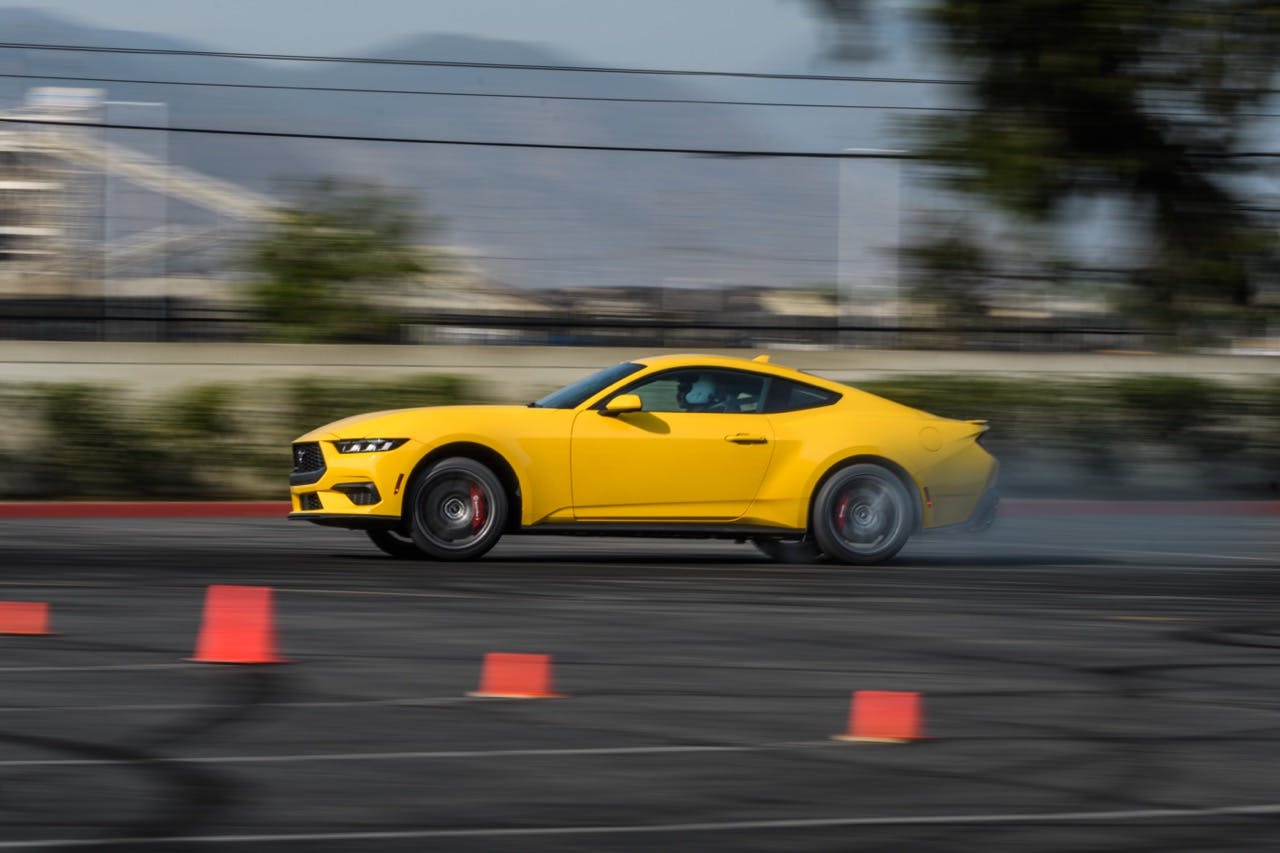

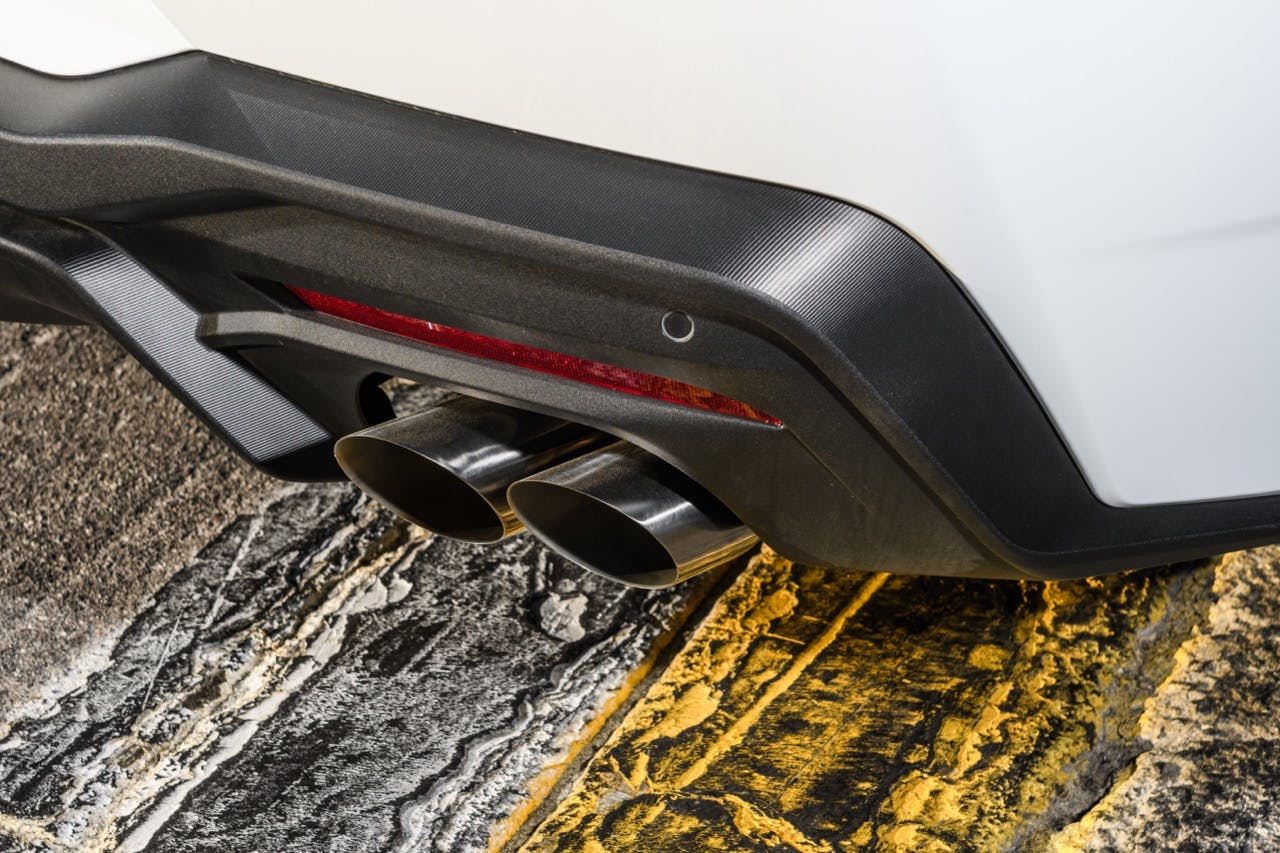
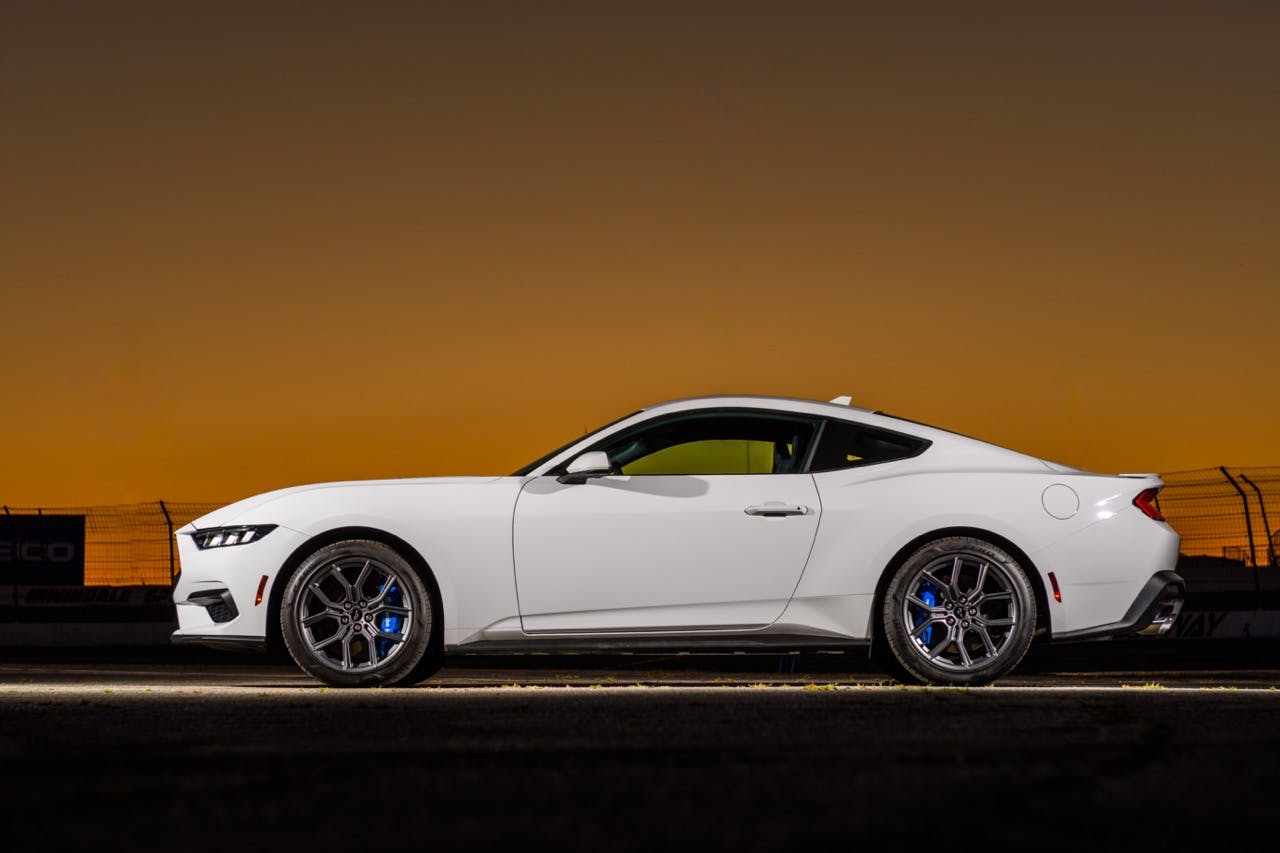


I have been driving Mustangs since I purchased my ‘79 Turbo Cobra off the lot in ‘78. I currently own an original ‘65 289 and a 2011 GTCS. I have also driven most years since the ‘92 model year. I have loved them all. 4, 6, and 8 cylinder versions. All good. I can tell you now, I have zero interest in this “new” generation and especially for that abomination called a dash. I want a proper car, not a video game to drive. I have no issues with LCD displays when properly integrated into the dash. But this trend of having a large LCD stuck to where the dash should be has zero appeal to me. Not only do they look bad, worse in person, they simply do not suit the car. I will stay with my original and my retro versions until they can no longer move. I will NOT be considering buying one of these new ones regardless of their specs.
I hate the screens, no stick, 🙁 . They messed up the interior, the exterior is not an improvement just a side step that is not entirely appreciated.
Give me a 3.5 ecoboost please
Don’t care for the Camaro-esque hips. And they can keep the do everything video screen. I’ll pass.
I’ve had 2 Mustangs. A ’68 coupe with the straight six and 3 on the floor.
I was 18 when I got it and despite being the most basic model, it still had plenty of panache.
My 2nd was almost 30 years later when I bought an ’03 Mach 1 right off the showroom floor. The DOHC all aluminum 4.6 and 5 speed stick were intoxicating.
I had it for 9 years and thoroughly enjoyed every drive. Did some drag racing and road course runs with it. Won me a few car show trophies too and never once broke down.
Most reliable car I ever owned.
Too bad premium fuel got so expensive.
Sure was fun while it lasted.
Well a later reply here mid 2024 and I just ordered my new Ecoboost – Full spec/every Package specifically because of the new screen layout, and the future ability to have SW and interconnectivity updated and maintained over the next 10-15 years with the comming generartions of cellular devices + I think it looks good.
My last two “Sports Cars” were 6.2L V8 LS3 powered Corvettes, loved them but at a certain age getting in and out with a bit of a disability means its time to move to the next adventure, I also made the concous choice to not have another V8, the price difference between the EB and the GT pays for 70K KM of Gas, and I’ve done fast and stupid whilst younger. I do feel the lack of manual in the EB was a missed oppoertunity, but also thankful the Auto was not an additional cost as it is in the GT, I’ve got other manual cars and bikes and my use case for the Mustang was an easy to use tourer with enough power to get by and do longer road trips in withour shyphoning the pension down too quickly. OVerall IM very pleased with my choice and yes I dis look at the last of the Cameros and the S550’s and they just felt old, and I only need one of feelo=ing old when I buy a new car.